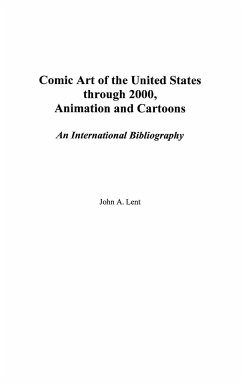
Animating the Cute, the Mean and the Beautiful
The Production and Consumption of Animation: Taiwan's Struggles in the Age of Globalization
Versandkostenfrei!
Versandfertig in 6-10 Tagen
52,99 €
inkl. MwSt.

PAYBACK Punkte
26 °P sammeln!
This study examines animation as the end product of acomplicated relationship between conscious socialexchanges and intelligent cultural management. Byemploying an ethnographic approach, the researcherinvestigated how animation, as a form of culturalproduct, was and is, produced and consumed in theglobal age, as transnational capital has reorganizedthe world economy toward a more globally integrated,task-segmented system. Taiwan was, and still is, one of the largestproducers of animation in the world. However, theindustry was founded in a dependent position withinthe subcontracting environment...
This study examines animation as the end product of a
complicated relationship between conscious social
exchanges and intelligent cultural management. By
employing an ethnographic approach, the researcher
investigated how animation, as a form of cultural
product, was and is, produced and consumed in the
global age, as transnational capital has reorganized
the world economy toward a more globally integrated,
task-segmented system.
Taiwan was, and still is, one of the largest
producers of animation in the world. However, the
industry was founded in a dependent position within
the subcontracting environment. It relied heavily on
the pre and post-production skills of the client
countries
in the first world, such as the United States
(Hollywood) and Japan. In the digital age, the
animation industry attempts to move upwards along the
value chain, creating full-length features, to adapt
a live-action film to animation, and hopefully to
spur a burgeoning video game industry. Despite a
number of government-led projects, the brain-drain in
narrative planning, storytelling and global marketing
remains in the way of its quest.
complicated relationship between conscious social
exchanges and intelligent cultural management. By
employing an ethnographic approach, the researcher
investigated how animation, as a form of cultural
product, was and is, produced and consumed in the
global age, as transnational capital has reorganized
the world economy toward a more globally integrated,
task-segmented system.
Taiwan was, and still is, one of the largest
producers of animation in the world. However, the
industry was founded in a dependent position within
the subcontracting environment. It relied heavily on
the pre and post-production skills of the client
countries
in the first world, such as the United States
(Hollywood) and Japan. In the digital age, the
animation industry attempts to move upwards along the
value chain, creating full-length features, to adapt
a live-action film to animation, and hopefully to
spur a burgeoning video game industry. Despite a
number of government-led projects, the brain-drain in
narrative planning, storytelling and global marketing
remains in the way of its quest.









![A Philosophical Enquiry Into the Origin of Our Ideas of the Sublime and Beautiful [By E. Burke] Cover A Philosophical Enquiry Into the Origin of Our Ideas of the Sublime and Beautiful [By E. Burke]](https://bilder.buecher.de/produkte/67/67255/67255226n.jpg)


